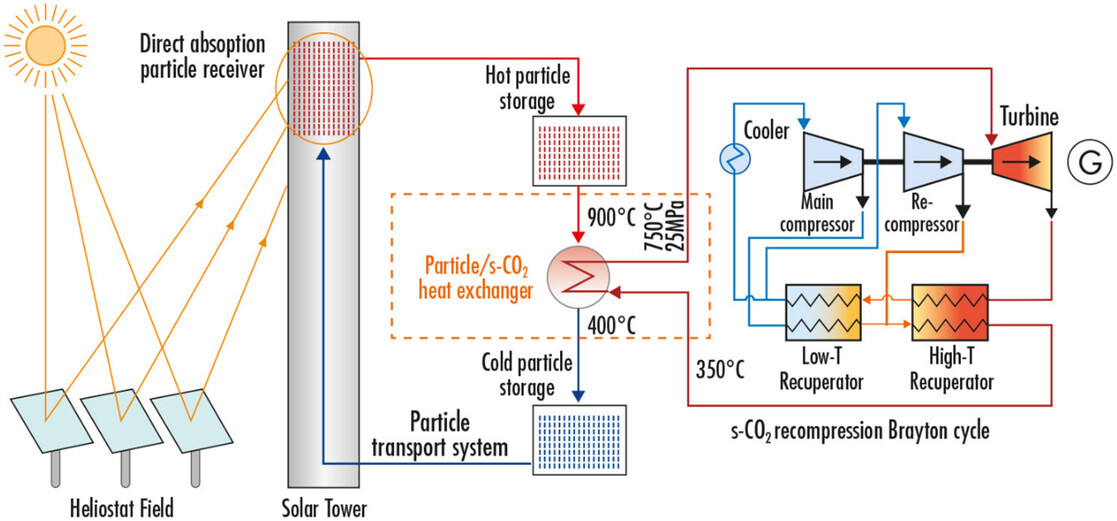M.C. Galetz, E.M.H. White, M. Kerbstadt, C. Schlereth, X. Montero, D. Benitez
Advanced Engineering Materials 2402060 (2025), DOI: 10.1002/adem.202402060

Combining supercritical CO2 (s-CO2) cycles with particle-based heat transfer media for concentrated solar power (CSP) plants offers great potential if the material challenges can be overcome. The core challenge in integrating these systems is the particle/s-CO2 heat exchanger, which must handle extreme conditions, such as high temperatures, high pressures, and erosion from both CO2 and hot particles. The mechanical requirements for such a heat exchanger are exceedingly high, demanding materials that can resist CO2-corrosion and high stresses due to the operating conditions in the supercritical fluid. In addition, the heat exchanger material must also withstand severely erosive conditions due to the hot heat-carrying particles sliding on the outside of the tube walls. The best selection of an appropriate heat exchanger alloy is discussed, considering cross-references from supercritical and ultrasupercritical steam boilers and supercritical CO2 cycles in nuclear power applications. A method is shown to estimate the mechanical requirements, as well as the challenge of determining the corrosion and erosion allowance. Ultimately, the material requirements and challenges are summarized for creating a practical and durable heat exchanger to support the integration of supercritical CO2-based cycles with CSP plants. Future research and material testing are defined to overcome the final hurdles.